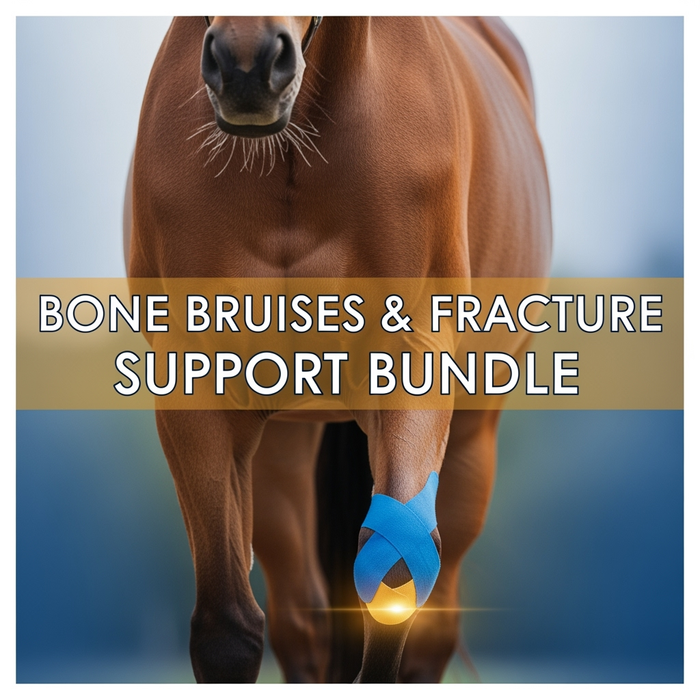Navigating a Bone Injury or Bruise? Here’s What to Use—And When
Get protocol recommendations for horse bone injuries, bone spavin, bruises, cysts, and post-fracture healing—always with veterinary guidance.
- Download the Bone Bruise & Fracture Protocol PDF Free with purchase of the Signature Bundle
- Access the Signature Bundle—Course + Supplies
This protocol tells you the best Equi-Tape® applications for supporting bone healing, reducing swelling, and adding gentle, non-restrictive support for bruises, fractures, or cysts. Combine taping with your veterinarian’s recovery plan for the best results—and use the Signature Bundle to unlock step-by-step video guides and ensure you have every supply on hand.




